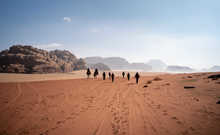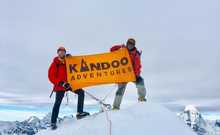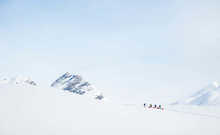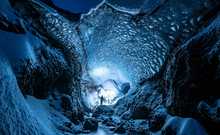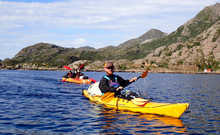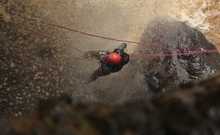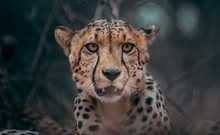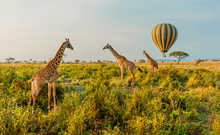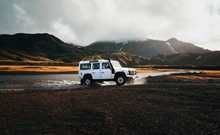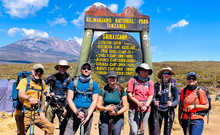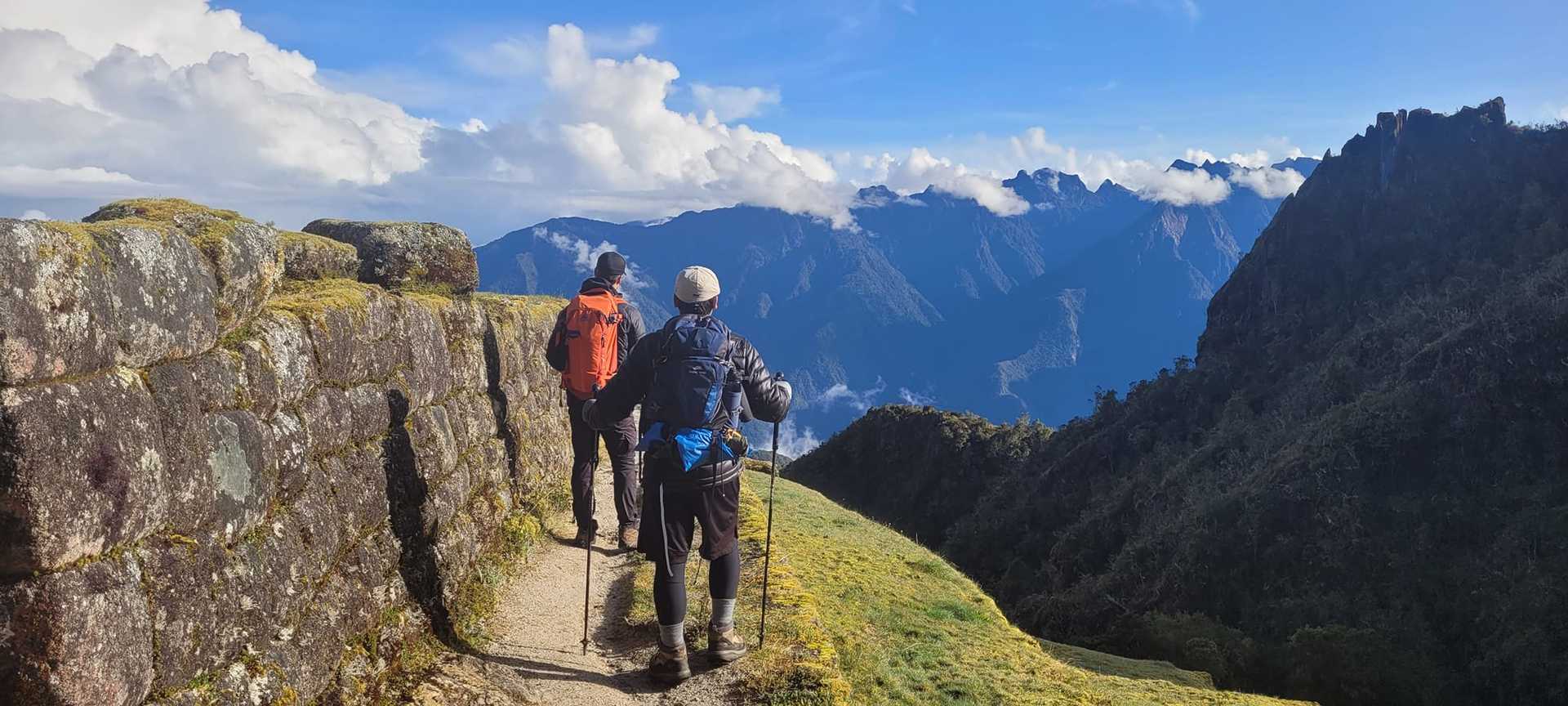Peru is Kandoo's destination exotique. The deep, luscious forests surrounding towering peaks, dotted with incredible mountain villages that teeter on the edges of cliffs, make it a location that so many of us have dreamed about. There is nowhere else that can mix culture and mountains in quite the same way. The people here are so welcoming especially in the mountainous areas, which is why we have extended our Peru trips to include a wide range of treks, from the famous Inca Trail and Salkantay Trek to the lesser known Vilcabamba and Choquequirao which delve into quiet wilderness. First-time trekkers in Nepal are always wowed by the awesome architecture of Macchu Picchu, then once you have got the taste for Peru, there is so much more you can do. There is more information about each region and the great treks you can do below.
There several good ways to get to Cuzco from the UK. The first is to fly KLM to Lima with a stopover in Amsterdam. The second is to fly with Air France who offer flights to Lima via Pairs, or alternatively you can use Iberia who fly to Lima via Madrid. From Lima you will have to get a domestic flight to Cuzco. Domestic airlines include LATAM, Avianca, Star Peru or Peruvian Air. We recommend flying with LATAM as their planes have the capability to land in the foggy conditions that can affect Cuzco and Lima. Most flights from Europe land in the evening, local time. Most flights for Cuzco don’t leave until the morning, so if you don’t fancy loitering in the airport all night (which we do not recommend), you’ll need an overnight stay in Lima.
Trekkers starting off in North America have a much wider set of options. American Airlines and US Airways both offer flights into Lima, as do several other carriers. In addition to existing security measures at international airports, passengers MAY be required to show that the electronic devices in their hand luggage are charged up. You may therefore be asked to turn on any electronic devices such as mobile phones, tablets, e-books and laptops in front of the security team and/or demonstrate the item’s functionality. We recommend that any electronic devices that you are carrying in your hand luggage are fully charged before you travel. If you have any further questions then you should check with your departure airport.
If you are changing airlines or re-checking your luggage at an airport on route, please ensure you leave a minimum of 3 hours between flights. This will account for any delays on arrival, travel time across airports (this can take longer than you think) and time taken to re-check baggage.
Our favourite treks in Peru
The Urubamba Province covers an area of 1,439 km² and is where the Vilcabamba mountain range lies, in the Southern Highlands of Peru. This is the home of the famous ruins of Macchu Picchu and it's highest peak is Salcantay which sits at 6271m. Part of this mountain range is protected by the Area de Conservacion Regional Choquequirao, within which sits Pumasillo, another tall peak stretching to 5991m in height. This protected area was established in 2017, with the aim of preserving the ecosystems of humid montane forests, seasonally dry forests and native forests that cover these lands. We operate five world class adventures in the Vilcabamba mountain range:
INCA TRAIL | The most well-known of all the trekking routes to Machu Picchu, the Inca Trail is the original pilgrimage route to this most sacred temple and is by far the most popular route.
ULTIMATE PERU | We have bundled all the chaotic textile colours, raucous Amazonian rhythms and inspiring Inca ruins into one 'Ultimate' Peruvian trip. Adventuring between the gentle shores of Lake Titicaca, ascending into the high mountains on the Classic Inca trail and finishing by delving deep into the Amazon jungle, this is a culmination of Peru's highlights.
SALKANTAY TREK | The name Salkantay means 'Savage Mountain' and it is a strikingly beautiful single peak providing a great focal point for this route. The Salkantay to Machu Picchu trek has become popular with trekkers wanting to combine a quieter, less trodden route with a visit to the Inca ruins of Machu Picchu.
LARES TREK | The Lares Trek is an excellent trail for those who want to get ‘off the beaten track’ as it treks through Andean communities which have remained unchanged over centuries. The trek crosses a 4700m pass, and passes through traditional, colourful villages before reaching Ollantaytambo. From here you will catch a train to Aguas Calientes and your visit to Machu Picchu.
AUSANGATE TREK | The Ausangate trek is an amazing option for those looking for a challenging high altitude hike with several high passes to cross. It is not for the faint hearted and a good level of fitness is required. With five passes over 4500m, this is a pretty difficult trek and is not recommended for first-time trekkers. The trek also offers an array of wildlife including soaring condors, vicunas, bobcats and pumas.
VILCABAMBA TRAIL | The route runs through the sparsely populated Cordillera Vilcabamba, which looks much the same as when Hiram Bingham first explored here a century ago. As well as enjoying a wealth of flora, fauna, snow peaks and impressive valleys, trekkers visit some of the last domains of the great Inca empire. This trek is not for the faint of heart or weak of legs. It is a particularly challenging route with long trekking days and some tough ascents and descents.
Festivals and trekking
With a whole host of festivities occurring throughout the year in Peruvian culture it seems only right that we celebrate alongside them.
INCA TRAIL & FESTIVAL OF THE SUN | The most well-known of all the trekking routes to Machu Picchu, the Inca Trail is the original pilgrimage route to this most sacred temple and is by far the most popular route, taking in the iconic Sun Gate viewpoint over the ruins. Our Festival Of The Sun departure includes an extra nights accommodation in Cuzco after your trek, transport and guide for the festival and grandstand tickets so you don't miss a thing!
SHORT INCA TRAIL | This shorter trek condenses the best of the Inca Trail into just one day of trekking followed by a day spent in Machu Picchu, allowing more flexibility to enjoy the other cultural festivities taking place across the country.
Cultural extensions
LAKE TITCACA | Squeezed between the mountains of Bolivia and Peru, Lake Titicaca is one of the most fascinating lakes in the world. It is the world's highest navigable lake at over 3800 meters and is a sacred place for the Inca civilization, as their mythology says that the first Inca king, Manco Capac, was born here.
AMAZON RAINFOREST | You will enjoy is canoeing through the flood plains of the forest, being woken in the jungle by the noise of a thousand birds or the cry of howler monkeys. Wildlife is hard to spot but incredible when you do find it. The tribes that live along the riverbanks are fascinating and once you relax into its beauty you will leave with an indelible memory of one of the world's unique places. We can arrange a
3- day or
4-day extension for you.
RAINBOW MOUNTAINS | A fantastic opportunity to see the incredible, colourful, candy-striped Rainbow Mountains of Vinicunca, to the south of Cusco, by adding just one day to your itinerary.
COLCA CANYON | Colca Canyon is truly immense: twice as deep as the USA's Grand Canyon and the river at its bottom is a staggering 4160 metres beneath the rim. Unlike the Grand Canyon though the area is remarkably fertile and you can see the local people farming here on the pre-Inca stepped terraces.
When to trek
You can find detailed advice on when to trek in our Peru Travel Guide.
This a brief summary. Weather should be the first thing you think about when you decide when to trek. Peru has a rainy season between December and March, where rain is to be expected daily. In the shoulder seasons between April-June and October-December the weather can be a little unpredictable, sometimes showery but never too heavy. The summer is considered the best time to visit Peru, the weather is generally clear and warm, and trekking conditions are excellent. Nonetheless, even in the late summer, the foothills of the Andes are never completely dry. Mist often clings to the peaks and you can expect at least a few gentle showers.
Training for your trek in Peru
The trekking in Peru is generally not too difficult with most routes being fairly with the exceptions of the Ausangate, Choquequirao and Inca via Salkantay treks. Even on these, there is nothing that compares with summit night on Kilimanjaro. What makes trekking in Peru challenging is the altitude - you will be at a high altitude for the majority of the trek. The lack of oxygen in the air has a range of effects on the human body, but the most obvious is breathlessness. In Cuzco, you will already be at 3,400m where some people can begin to feel the effects of altitude. This makes any exertion a lot harder, so the most important thing you can do is go slowly. Exerting yourself too hard is a great way to bring on altitude sickness.
To avoid getting altitude sickness whilst trekking we have acclimatisation days in Cuzco prior to starting your trek. The guide's will also set a slow, steady pace to allow your body time to become accustomed to the altitude without exerting yourself too much.
Accommodation and food in Peru
Accommodation
Our standard of accommodation in Peru is very good. We use only the very best high altitude mountain tents, Eureka K-2 XT, to ensure you stay warm, dry and comfortable on your trek. Please bear in mind, these are proper mountain tents, designed to cope with extreme conditions so don’t expect to be able to stand up and walk around inside!
Your meals will be taken in a separate mess tent where you will be able to sit comfortably, while you relax and chat to your team mates and enjoy the wholesome food that our cook has freshly prepared for you. Inside, you’ll be pleased to find a table (of course) and a proper, comfortable chair. With a full 2 metres of headroom, even the tallest climbers will be able to stretch a bit, and move about without hunching over. They are fully waterproof, and regularly withstand the worst weather the Andes has to offer.
A toilet tent is also provided with a seated toilet and toilet paper.
Our pre- and post-trek accommodation is based in Cuzco and Aguas Calientes. Your hotel basis is B&B, however you can usually purchase snacks or meals at the hotel, which can be paid in Peruvian Sols, or often in US Dollars. Alternatively, there are plenty of restaurants in Cuzco within walking distance of your hotel.
Food
Staying well-fed on your trek is absolutely vital, especially when conditions are such that you might not want to eat or drink as much as you should. Because so many trekkers experience a loss of appetite at altitude, our head chef has developed special menu plans that are appealing, healthy, and filled with all the energy you need. By default, our meals include fresh fruit and vegetables every day, as well as fresh meat and fish. You will have four food breaks per day: Breakfast, Lunch, Afternoon Tea and Dinner. Dinners are quite filling. They usually begin with a nice hearty soup, and then a main course with fresh vegetables, and plenty of rice, pasta or potatoes, followed by a yummy dessert. Hot drinks will also be provided including tea, coffee, hot chocolate and Coca tea (which is great for helping to relieve the symptoms of altitude sickness).
On the trek, we filter and boil all the water that we give to you for drinking. You may wish to bring purification tablets as an extra precaution but they are not essential. Every morning we will fill up your water bottles or hydration bladder with at least 2 litres of water.
Toilets
The hotels in we use in Peru all have western, flushing toilets. Whilst on the trek the toilet situation will be a little less luxurious. At camp each evening we will set up a toilet tent. This is a simple facility that provides a little privacy and comfort whilst on the trail. The toilet tent will contain a portable, sit down toilet. Whilst trekking, if you need to go you will have to find somewhere hidden, off the path and go wild. There's plenty of places to hide in the Peruvian forests!
Budget
The Peruvian Sol can be purchased in advance, although US Dollars are also widely accepted in larger establishments. If you want to change money when you arrive we can take you to an ATM or foreign exchange bureau. When changing money, request small denominations (10’s, 20’s and 50’s) as the larger notes can be hard to spend. If you withdraw money from an ATM, you are likely to receive 100 sol notes. Peru is generally still a cash society, particularly whilst you are travelling through the smaller villages and towns it is worth having enough cash with you for personal expenses. ATMs will also not be available in these areas so ensure you have exchanged enough money whilst in Cuzco, before leaving on your trek. If you are relying on a credit or debit card for emergency funds, make sure you tell your card issuer that you will be using it abroad, or you may find that it won't work when you really need it.
In Cuzco, the cost of public transport is around 22p (33 cents) for a one-way ticket. If you prefer to travel by taxi, starting price is about £1.10 (US$1.40) for a 1km ride. When eating out, a meal in a budget restaurant for 2 people is around £5 (US$7) or a mid range restaurant (for 2 people) will cost around £22 (US$28). For souvenirs to take home, we recommend budgeting around £40 (US$50) which should get you plenty of little gifts. If you wish to buy a big blanket or poncho then budgeting a little more would be worthwhile.
Our recommended guidance for spending budget in Peru would be between £80-100 ($100-125) on top of your tips, to give you ample souvenir and meals out spending money.
Tips
We realize that tipping may not be a common practice in all countries but for Peru it is a standard practice that all operators support. The decision on how much to tip should be determined by how well the team served you while you were on the trek. Tips are always discretionary and if you are not happy with the service you have received you do not have to pay tips. Tips can be made in US dollars or Peruvian Sols. It is very important that US bills be new (less than 10 years old), crisp and untorn.
We say goodbye to our porters before heading to Macchu Picchu. Any tips that you wish to give to the porters will need to be carried on the trek with you. See below our recommendations (per trekker) for tips on all of our trips:
Inca Trail
Recommended tips per trekker for entire trip:
Lead
guide: $100
Assistant Guide: $60
Cook: $36
Assistant Cook: $27
Porters (amount per porter): $18
Different crew members will be with you for different stages of your trip to Peru:
- Your guide/s will be with you every day in Peru.
- Your cook/s and porters will be with you while you are on the trek itself (The number of porters will differ depending on group size. You will be given this information three weeks before departure)
- An assistant guide and cook will only be necessary for larger groups (You will be given this information three weeks before departure)
Inca and Salkantay combined route
Recommended tips per trekker for entire trip:
Lead
guide: $140
Assistant Guide: $84
Cook: $76
Assistant Cook: $54
Porter (amount per porter): $18
Tent helper (amount per tent helper): $18
Horseman (amount per horseman): $30
Different crew members will be with you for different stages of your trip to Peru:
- Your guide/s will be with you every day in Peru.
- Your cook/s, porters, tent helpers and horsemen will be with you while you are on the trek itself (The number of porters, tent helpers and horsemen will differ depending on group size. You will be given this information three weeks before departure)
- An assistant guide and cook will only be necessary for larger groups (You will be given this information three weeks before departure)
All other routes
As treks run for differing lengths, you will need to account for the number of days you will be on the trek (excluding arrival and departure days). You will be provided with tip recommendations for your specific trip 3 weeks prior to departure that will give an accurate representation of how much you will need for tips.
These are the recommended tips per trekker per day:
Lead
guide: $20
Assistant Guide: $12
Cook: $12
Assistant Cook: $9
Porter (amount per porter): $6
Tent helper (amount per tent helper): $6
Horseman (amount per horseman): $10
Different crew members will be with you for different stages of your trip to Peru:
- Your guide/s will be with you every day in Peru.
- Your cook/s, porters, tent helpers and horsemen will be with you while you are on the trek itself (The number of porters, tent helpers and horsemen will differ depending on group size. You will be given this information three weeks before departure)
- An assistant guide and cook will only be necessary for larger groups (You will be given this information three weeks before departure)
Other things to do in Peru
Besides trekking, Peru has some fantastic activities and a lots of spectacular festivals. White water rafting is extremely popular, Peru has the deepest canyon in the world – the Colca Canyon! As well as the world's largest river, the Amazon. Rafting is available on both of these, however beginners should start with the lower grad Urubamba River. For animal lovers, a visit to the Amazon rainforest is an excellent option. You can go searching for animals such as capybaras, caimans, tapirs and jaguars by walking along the banks of the Tambopata River and hear the calls of Howler monkeys from way up in the trees.
Cultural tours in Cuzco are also possible. This is a good way to spend your acclimatisation day exploring Cuzco on a half day tour to learn about the continent's oldest continuously inhabited city. Or get out of the city and visit the Sacred Valley. Located North-east of Cuzco this valley boasts ancient ruins of Pisaq and Ollantaytambo as well as the birthplace of the rainbow, Chinchero. If you have time, and fancy a trip around Easter then Holy Week (the last week of Lent) is an awesome time to be in Cusco. The city is alive with a good-natured buzz; it’s all brass bands and dancing by day, fireworks and partying at night.
